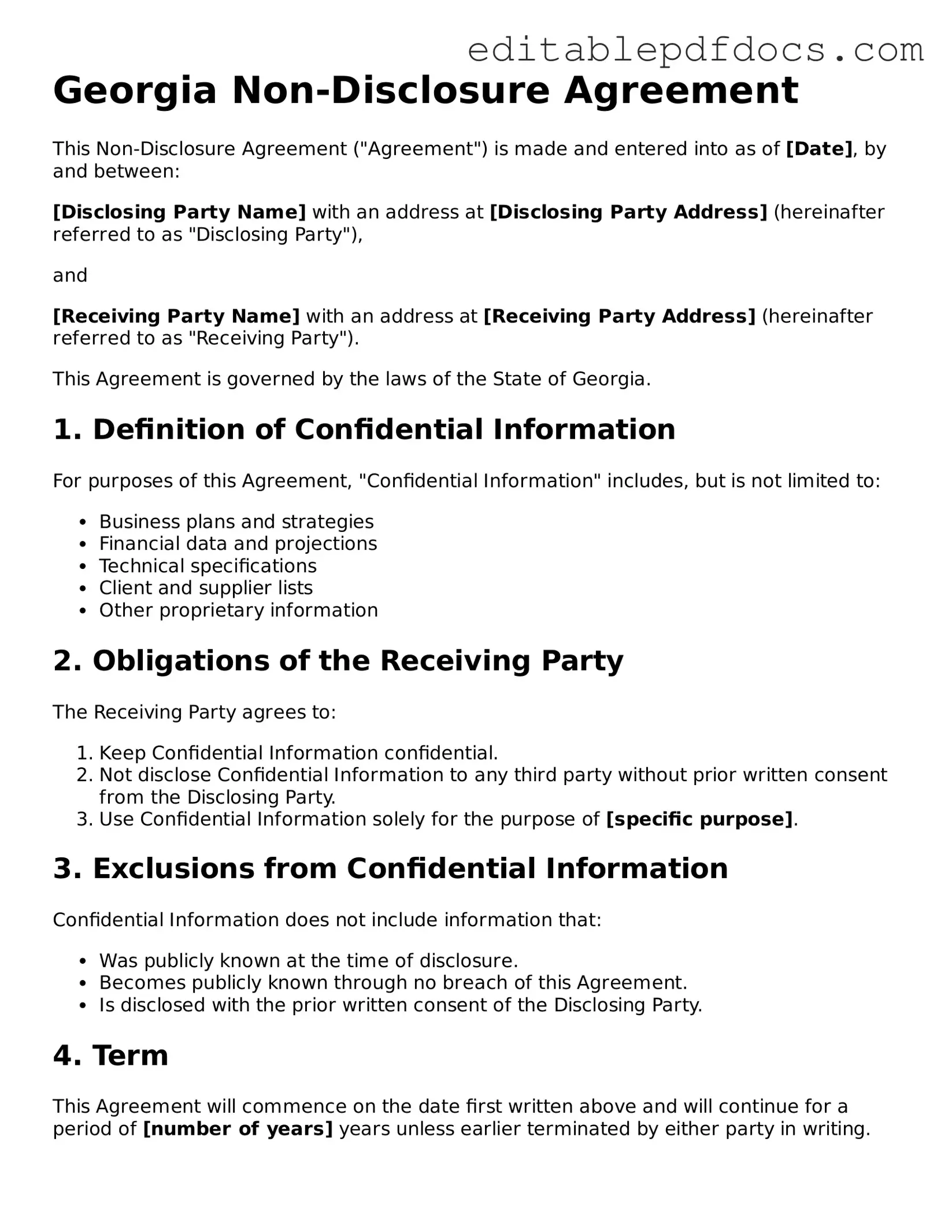Filling out the Georgia Non-disclosure Agreement (NDA) form can be straightforward, but many individuals make common mistakes that can lead to complications down the line. Understanding these pitfalls can help ensure that the agreement is completed correctly and serves its intended purpose.
One frequent error is not clearly defining the confidential information. The NDA should specify what constitutes confidential information. Vague language can lead to misunderstandings. It is essential to detail the types of information being protected, whether it is trade secrets, business strategies, or customer lists. Without clarity, the agreement may not hold up in a legal context.
Another mistake involves failing to identify all parties involved. Each party's name should be clearly stated in the agreement. Omitting a party or using incorrect names can create confusion and potentially invalidate the NDA. It is vital to ensure that all individuals or entities who will be privy to the confidential information are included in the document.
Some individuals overlook the importance of specifying the duration of the agreement. The NDA should clearly state how long the confidentiality obligations will last. If this is not specified, it can lead to disputes later on about how long the information must remain confidential. A well-defined time frame helps set clear expectations for all parties involved.
Additionally, not including the consequences of breach is a common oversight. The NDA should outline what happens if one party fails to adhere to the agreement. This could include legal action or financial penalties. By detailing these consequences, all parties understand the seriousness of the agreement and the potential repercussions of violating it.
Many people also make the mistake of not having the agreement reviewed by a legal professional. While it might seem unnecessary, having an attorney review the NDA can help catch any errors or omissions. Legal professionals can provide guidance on ensuring that the agreement complies with Georgia law and effectively protects the interests of all parties involved.
Finally, neglecting to date the agreement is a simple yet significant mistake. A date is crucial for determining when the obligations begin. Without a date, it can be challenging to establish timelines for confidentiality and enforcement. Always ensure that the NDA is dated appropriately to avoid any confusion in the future.
By being aware of these common mistakes and taking steps to avoid them, individuals can better protect their confidential information and ensure that their Georgia Non-disclosure Agreement is effective and enforceable.
